History of the Kingston Potters’ Guild
In January 1967, a group of six local potters formed what was known as the Kingston Ceramists’ Guild. This name was originally chosen to be inclusive of people interested in both pottery and enamel work. Led by William “Bill” Hutchison, the Guild came together to share practical knowledge, combine resources, exhibit as a group and find a common space in which to create pottery. At first, meetings were held in members’ homes, but by March 2 of that year (when the membership had swelled to 18) they had their first public meeting upstairs at Richardson Bath House, which is located on the shore of Lake Ontario, at the end of Emily Street, in Kingston. This meeting included a film, two speakers and a social hour to drum up support for the group. Public engagement was an important element of the Guild’s early history. As part of the celebrations around Canada’s centennial happening that year, Guild members offered public demonstrations at the Bath House to promote Canadian craft. In June, their work was first displayed in a formal exhibition at the Kingston “Arts Centre”.
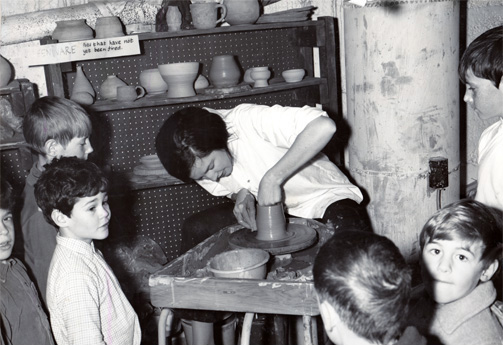
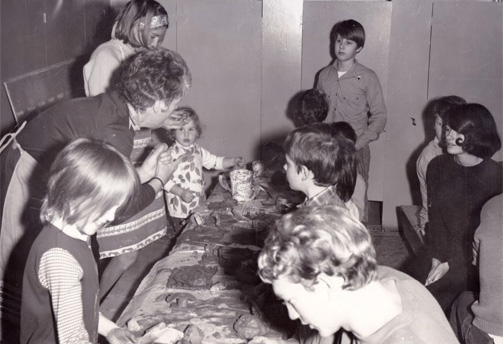
The original was designed sometime after 1969, when Margaret Hughes joined as a member. She and Peter Dorn, head of the graphic design unit at Queen’s University, created the image, which features a potter at a kick wheel. The name of the Guild, arched over the figure, was added later. The logo reflects the early history of the Guild, depicting the kick wheels used by the original members at the Richardson Bath House and, in the shape of the lettering, showcasing the arched door of the first gas kiln.
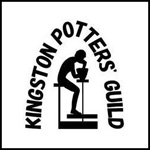
During the 1970s, the group was involved in a number of municipal and public events, donating pottery to the City of Kingston and showing and selling their work to the general public. To demonstrate their appreciation for the City’s support of their endeavours, the Guild contacted Mayor George N. Speal in 1972 to arrange a donation of approximately 30 raku platters as part of an installation that was displayed in the newly renovated City Hall. This gift coincided with Kingston’s tercentenary year in 1973. Two years later, another donation of flowerpots and ashtrays was made to the Department of Parks and Recreation at the City as a thank-you for its role in the establishment of the Guild.
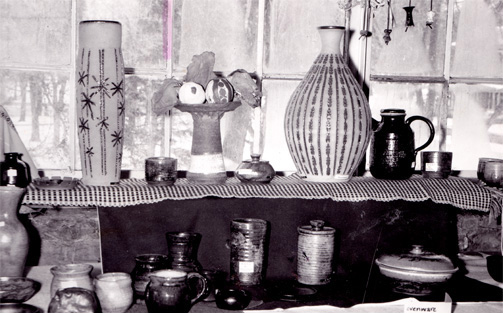
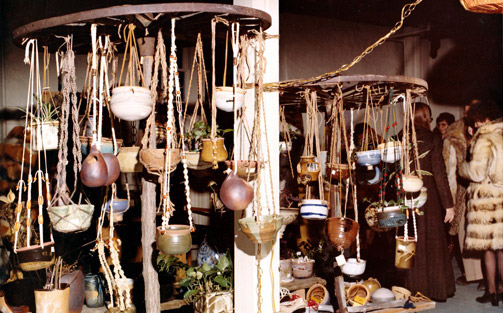
At around this time, the Kingston Ceramists’ Guild had reached over fifty members and plans for a more permanent home for the group were discussed. In 1972, the City began working on the development of the J. K. Tett Creativity Centre. Under the direction of Douglas Fluhrer, the then head of Parks and Recreation at the City of Kingston, the project came to fruition. The building became home to a number of arts groups, including the newly renamed Kingston Potters’ Guild. From 1975 to 2010, the Tett Centre served as the Guild’s hub, a place in which members could work in the shared studio, classes could be offered to the public and meetings and celebrations could be held. In 1987, an exhibition was put together to celebrate the Guild’s 20th anniversary. It included work from various established artists and artisans and attracted the attention of the wider community with children’s activities, live raku demonstrations and a special show and sale.
Around 2005, the City of Kingston began considering the future of the Tett Centre, which was in need of repairs. After some public debate about the long-term fate of the Tett Centre, it was decided that the City would continue to maintain the site as an arts centre and allow its tenants to remain.
Thanks to the support of the community, a renovation project was planned. From December 2010 to December 2014, the Guild was relocated to the old locker rooms of the decommissioned Harold Harvey Arena where business continued as usual.
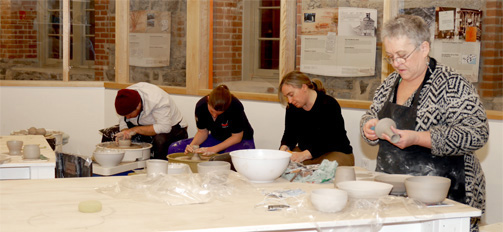
The newly reopened Tett Centre for Creativity and Learning currently houses the Kingston Potter’s Guild (Figure 6) and the Tett Centre’s Community Exhibition Gallery provided the ideal location for our commemorative exhibition of the Guild’s first fifty years. As of 2017, our space boasts three electric kilns, a large gas kiln, a glazing room, a studio space with 11 electric pottery wheels, a kitchen, chemical store and a storage space for members’ materials and works-in-progress.
Currently, spring and Christmas sales help to support our members and the Guild itself through sales and advertisements. We also offer a number of classes and workshops on various topics, which are geared towards people of different skill sets. We are so grateful for the ongoing enthusiasm of the Kingston community, you have helped us to flourish and share our passion for clay. We hope that the next fifty years will prove to be just as rewarding.
